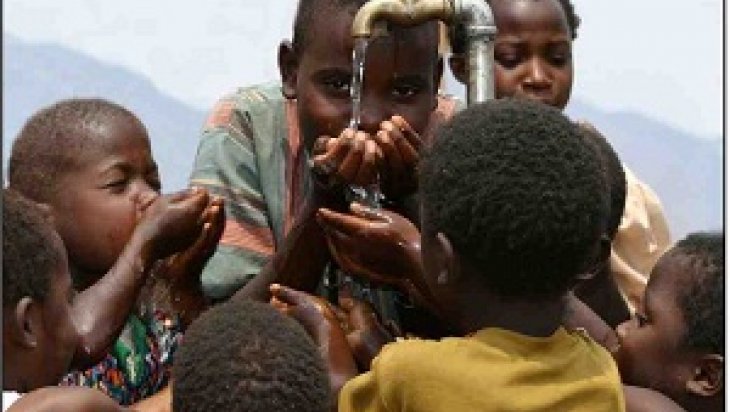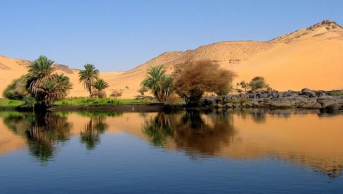Developing Unevenly: The Outlook of Access to Water and Sanitation in the Middle East

JMP is an acronym for Joint Monitoring Program for Water Supply and Sanitation. It is administered by World Health Organization and UNICEF. It was a program launched some quarter century ago, in 1990, following the International drinking-water Supply and Sanitation Decade (1981-1990), upon the recognition of the fact that a better system was needed to monitor progress at the country level. It now tracks progress for 215 countries, areas and territories. Its findings with regard to Millennium Development Goal No. 7.C on safe water supply and basic sanitation reveal significant lessons for the Middle East.
Main objectives of the JMP are listed as a) to compile, analyze and disseminate high quality, up-to-date, consistent and statistically sound global, regional and country estimates of progress towards internationally established drinking-water and sanitation targets in support of informed policy and decision making by national governments, development partners and civil society; b) to serve as a platform for the development of indicators, procedures and methods aimed at strengthening monitoring mechanisms to measure sustainable access to safe drinking-water and basic sanitation at global, regional and national levels; c) to promote, in collaboration with other agencies, the building of capacity within government and international organizations to monitor access to safe drinking-water and basic sanitation.
In terms of structure JMP “comprises a small number of technical staff in both organizations, including statisticians/monitoring experts and water and sanitation specialists within the Water, Sanitation, Hygiene and Health Unit at WHO, and the Water, Sanitation and Hygiene Department and the Data and Analytics Section at UNICEF.” In order to assist JMP, aStrategic Advisory Group (SAG) has been established with an aim of bringing in “independent, strategic thinking into the further development and implementation of the Joint Monitoring Program”. The main task of the SAG is to provide“strategic guidance to ensure that access to safe drinking-water and improved sanitation is properly monitored up to the MDG target date of 2015 and beyond.” The SAG, which is composed of independent technical and policy experts with strong expertise in strategic thinking and leadership in the sectors, meets once a year. Main donors to JMP include institutions from Australia, France, Germany, the Netherlands, Switzerland, the United Kingdom, the United States, as well as the European Union (the European Commission).
The JMP’s has published its 2015 Report, which reflects the most updated data on MDG related to water. When drinking water target (halving, by 2015, the proportion of the population without sustainable access to safe drinking water in 1990)is concerned, most countries in the region have met the target. Exceptions include Morocco, Algeria, Syria, Iraq. Yemen and Libya and Yemen did not provide adequate date to be monitored. Actually, the region of Western Asia appears to be the leader in terms of increase in proportion of 2015 population who gained access to an improved drinking water source since 1990. By contrast, Northern Africa is lagging behind, which ranked seventh out of nine developing regions. With respect to halving the population without sustainable access to basic sanitation, again, beside few exceptions, most of the countries in the region have met the target. These exceptions are Libya, Algeria -and perhaps Yemen which did not provide sufficient data. Despite rapid population growth, Western Asia and Northern Africa are top two developing regions in increasing the proportion of 2015 population who gained access to improved sanitation since 1990.
The percentage of the population with access to piped water on premises is a significant criterion of better access to water and sanitation. Following the region of Latin America and Caribbean (88), Western Asia (84) and Northern Africa (83) are among top performers in this category. The world average is only 56 percent. Western Asia and Northern Africa were especially successful in increasing the proportion of the population using piped water on premises. These numbers have gone from 43 to 83 in Western Asia, and from 33 to 78 in Northern Africa.
One of the significant findings in the Report is related to the inequalities between rich and poor, and between urban and rural. These inequalities are important in the sense that sometimes national averages tend to hide the plight of the poor.
Richer generally is better off than the poorer. Similarly, while urban figures in many developing regions, including the Middle East, tend to come close to those of developed countries; the situation in rural areas demonstrate a different picture. Sanitation coverage in rural areas for instance still lags significantly behind urban areas. This also applies for improved drinking water coverage. While this is the general outlook, there are several exceptions which diverge greatly. Egypt, for instance, represents a success story which has been able to reduce proportion of the population in poorest rural areas using unimproved drinking water and unimproved sanitation facilities.
All in all, with regards to access to drinking water and sanitation, Middle East is in a better situation than many part of the developing world, despite the damage caused by terror, and intra-state instabilities in large portions of the region. Nevertheless, meeting the MDG targets is not an ultimate aim, rather it should be accepted as the first step of an everlasting journey for improving standards of life of all people in this part of the globe.









